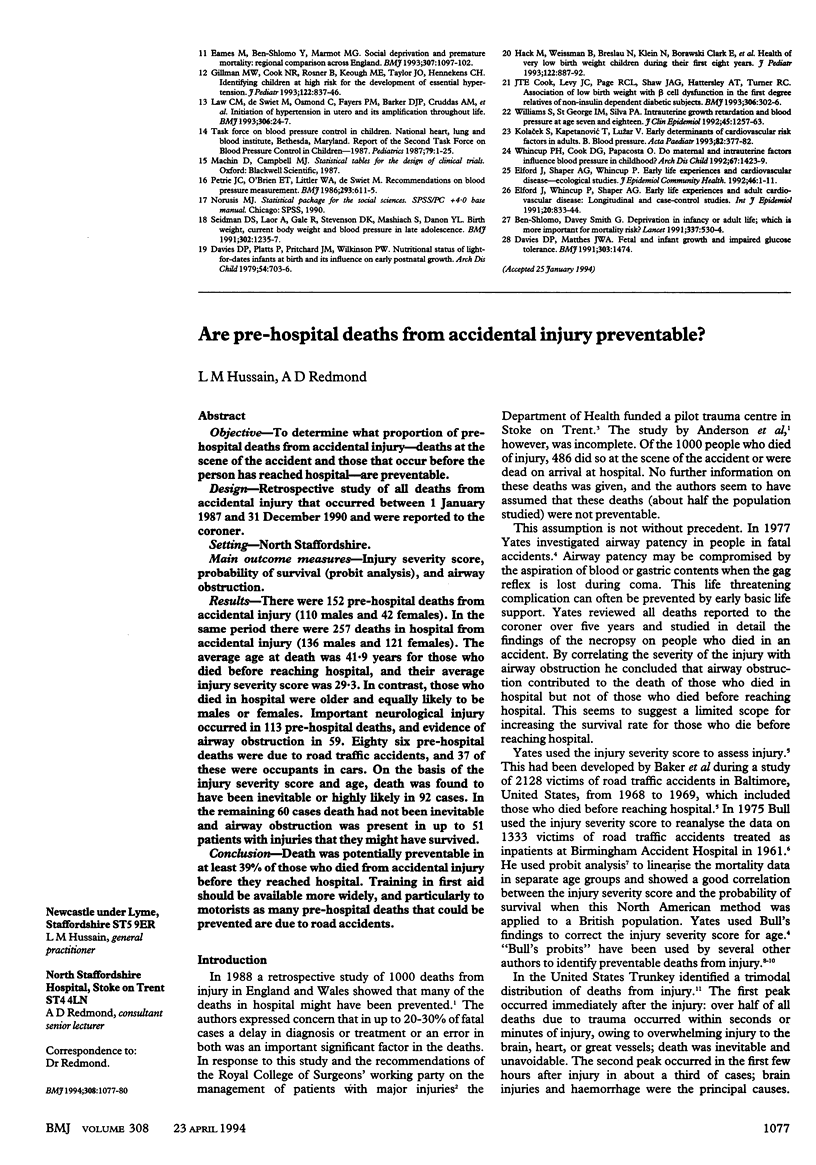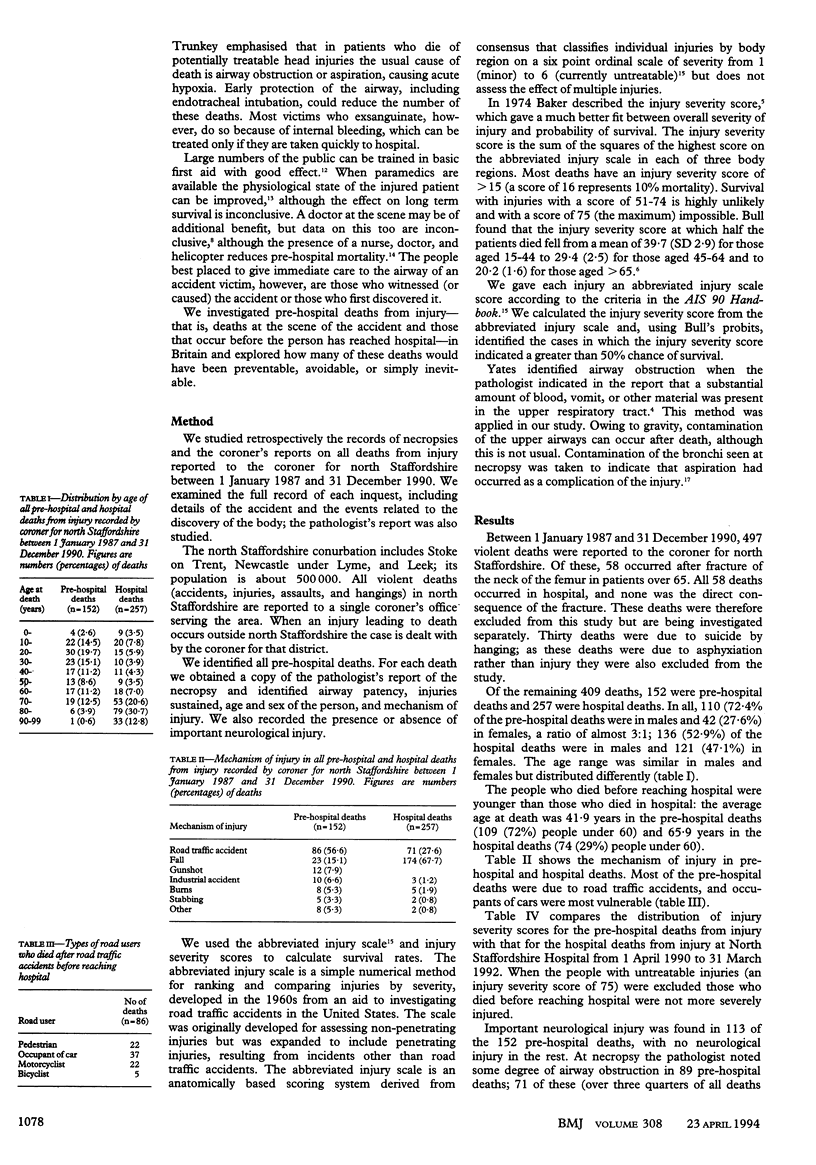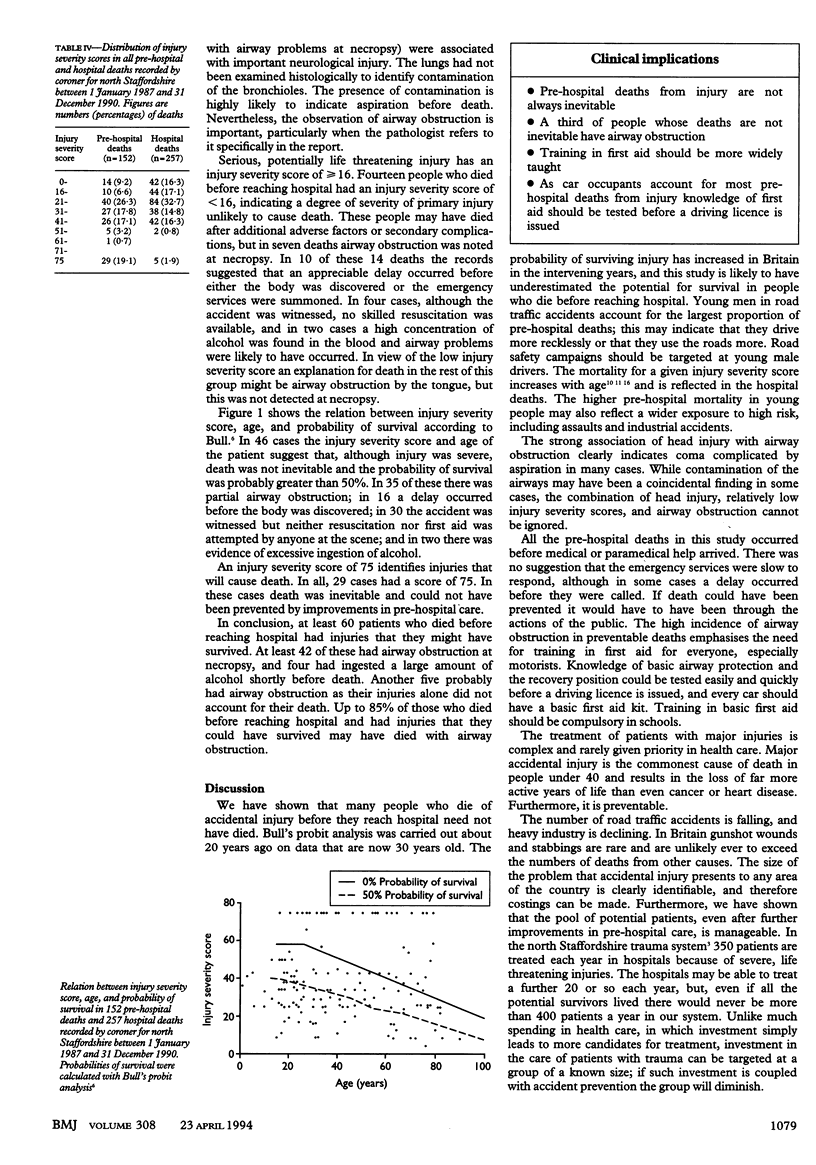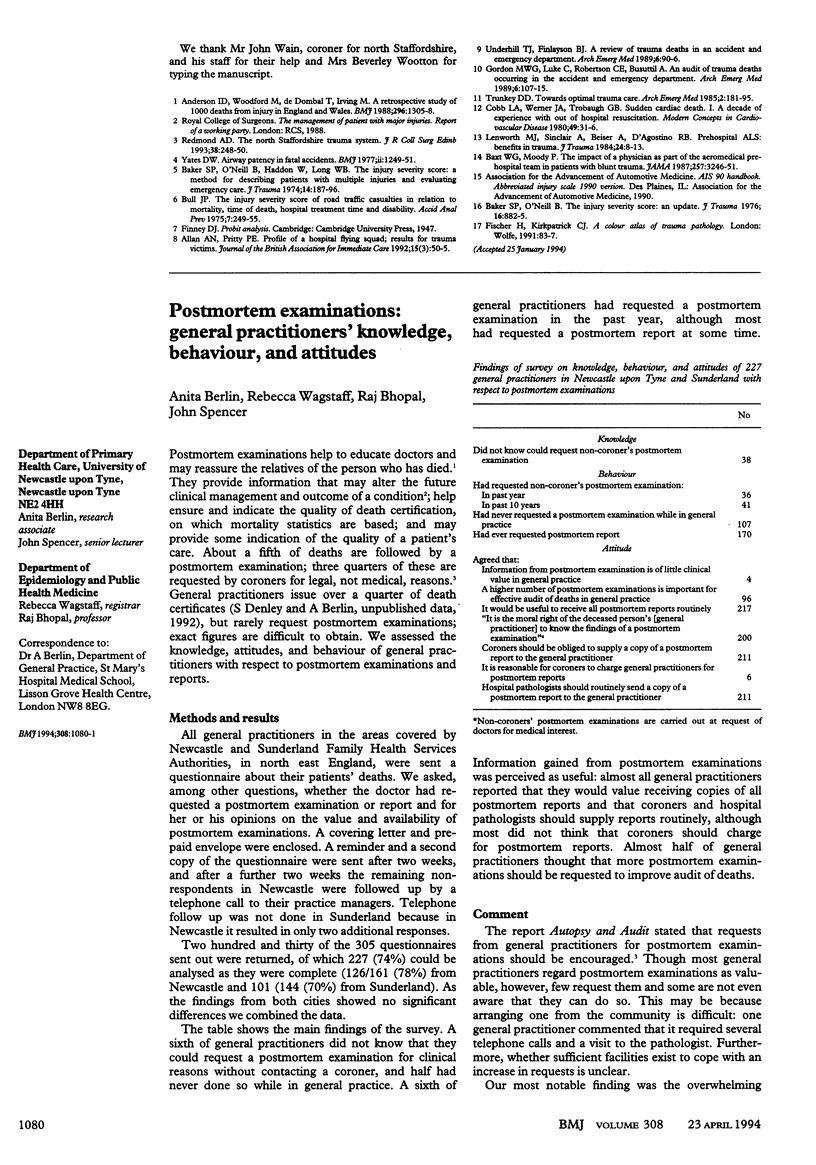Abstract
OBJECTIVE--To determine what proportion of pre-hospital deaths from accidental injury--deaths at the scene of the accident and those that occur before the person has reached hospital--are preventable. DESIGN--Retrospective study of all deaths from accidental injury that occurred between 1 January 1987 and 31 December 1990 and were reported to the coroner. SETTING--North Staffordshire. MAIN OUTCOME MEASURES--Injury severity score, probability of survival (probit analysis), and airway obstruction. RESULTS--There were 152 pre-hospital deaths from accidental injury (110 males and 42 females). In the same period there were 257 deaths in hospital from accidental injury (136 males and 121 females). The average age at death was 41.9 years for those who died before reaching hospital, and their average injury severity score was 29.3. In contrast, those who died in hospital were older and equally likely to be males or females. Important neurological injury occurred in 113 pre-hospital deaths, and evidence of airway obstruction in 59. Eighty six pre-hospital deaths were due to road traffic accidents, and 37 of these were occupants in cars. On the basis of the injury severity score and age, death was found to have been inevitable or highly likely in 92 cases. In the remaining 60 cases death had not been inevitable and airway obstruction was present in up to 51 patients with injuries that they might have survived. CONCLUSION--Death was potentially preventable in at least 39% of those who died from accidental injury before they reached hospital. Training in first aid should be available more widely, and particularly to motorists as many pre-hospital deaths that could be prevented are due to road accidents.
Full text
PDF



Selected References
These references are in PubMed. This may not be the complete list of references from this article.
- Baker S. P., O'Neill B., Haddon W., Jr, Long W. B. The injury severity score: a method for describing patients with multiple injuries and evaluating emergency care. J Trauma. 1974 Mar;14(3):187–196. [PubMed] [Google Scholar]
- Baker S. P., O'Neill B. The injury severity score: an update. J Trauma. 1976 Nov;16(11):882–885. doi: 10.1097/00005373-197611000-00006. [DOI] [PubMed] [Google Scholar]
- Baxt W. G., Moody P. The impact of a physician as part of the aeromedical prehospital team in patients with blunt trauma. JAMA. 1987 Jun 19;257(23):3246–3250. [PubMed] [Google Scholar]
- Cobb L. A., Werner J. A., Trobaugh G. B. Sudden cardiac death. I. A decade's experience with out-of-hospital resuscitation. Mod Concepts Cardiovasc Dis. 1980 Jun;49(6):31–36. [PubMed] [Google Scholar]
- Gordon M. W., Luke C., Robertson C. E., Busuttil A. An audit of trauma deaths occurring in the accident and emergency department. Arch Emerg Med. 1989 Jun;6(2):107–115. doi: 10.1136/emj.6.2.107. [DOI] [PMC free article] [PubMed] [Google Scholar]
- Jacobs L. M., Sinclair A., Beiser A., D'Agostino R. B. Prehospital advanced life support: benefits in trauma. J Trauma. 1984 Jan;24(1):8–13. doi: 10.1097/00005373-198401000-00002. [DOI] [PubMed] [Google Scholar]
- Redmond A. D. The North Staffordshire Trauma System. J R Coll Surg Edinb. 1993 Aug;38(4):248–250. [PubMed] [Google Scholar]
- Underhill T. J., Finlayson B. J. A review of trauma deaths in an accident and emergency department. Arch Emerg Med. 1989 Jun;6(2):90–96. doi: 10.1136/emj.6.2.90. [DOI] [PMC free article] [PubMed] [Google Scholar]


